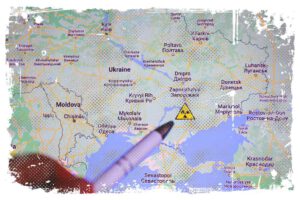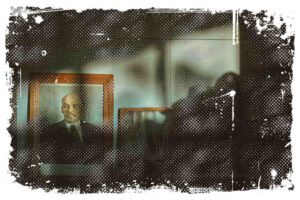„People have paved this path of doom for themselves”. Now, if you want to discuss the subject of concentration camps in Europe, the magnitude of human crimes committed in the past is an unavoidable topic. These atrocities, still resonating today, trigger not only horror but also spawn tragic misconceptions.
Take for instance, the infamous case of „Polish concentration camps„. The term rightly ignited the fury of Polish media and politicians. They fiercely objected to this misleading terminology. An error that might seem insignificant, but in reality, it creates a cascade of unfortunate implications.
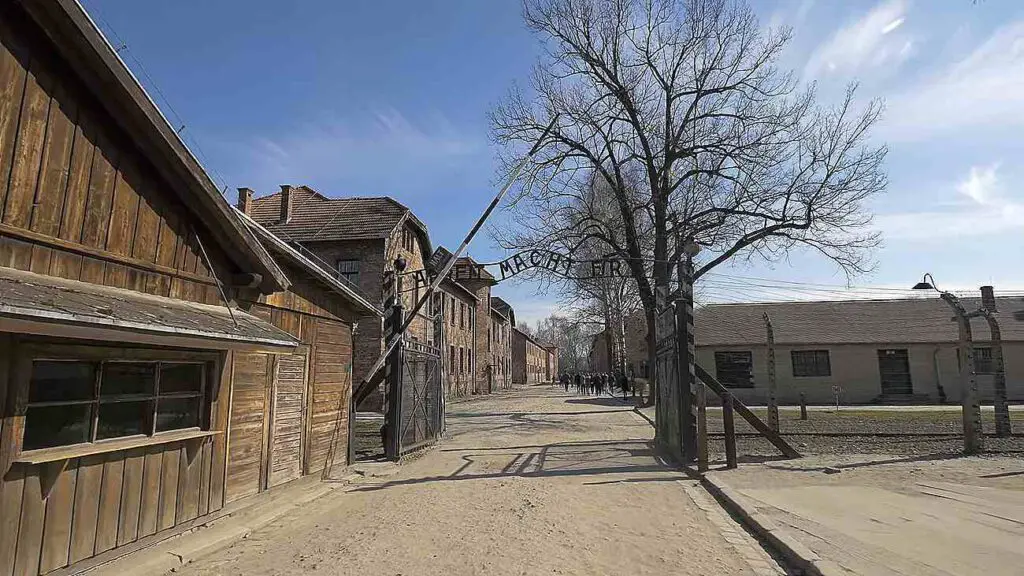
I can tell you, it’s downright outrageous when the nation most scarred by World War II gets likened to the very perpetrators of this horrifying conflict.
One Concentration Camp – Few Definitions
Let’s narrow down our focus a bit. Concentration camps, including labor camps, demand our attention. The notion of a concentration camp itself, emerged towards the late 19th century. Today, it’s a tricky task to define what exactly we’re investigating here.
↳ PRO TIP: Do you like traveling? Then before you buy any ticket or book an attraction, check if it's available in this worldwide Viator Database. You may save a lot of money and time. No need to thank me :)
What is concentration camp? A concentration camp, essentially, is a type of detention facility, where people are typically held unlawfully, without any formal sentencing, under conditions that are a gross affront to human dignity.
Now, allow me to clarify, this definition isn’t set in stone, there are exceptions.
Concentration Camp By Nazi Regime
You need to know that such a camp can either be a secluded, fenced, and heavily guarded site of criminal deportation, or, as in the Nazi regime, an outright death factory with an elaborate system for exterminating and disposing of prisoners.
For this article, I think it’s vital that we concentrate on the German model of the concentration camp.

The concept of detention centers has been around since antiquity, so it doesn’t surprise me that the totalitarian Nazi regime leveraged a similar institution to suppress dissenting citizens. Adolf Hitler’s ideological war began in the early 20th century, but it didn’t instantly become the defining factor of German policy.
Blueprint of The „Ideal” State
Over time, as Hitler’s support swelled and his National Socialist ideas morphed into an insidious form of racism, they became a staple in the German state. Hitler’s ascension to power, through legitimate parliamentary elections, marked the commencement of a massive shift in Germany’s landscape, as envisioned by the NSDAP members.
On February 28, 1933, the decree „On the Protection of the Nation and the State” was put into effect. This directive considerably curtailed civil liberties and authorized new law enforcement methods. Among these measures, the concentration camps soon earned their notorious reputation.
In fact, it is worth to say, as early as March 20 of the same year, Heinrich Himmler rolled out another legislative order that established a concentration camp in the Dachau region. This facility is widely acknowledged as the first of its kind in Germany. As the Reich and Nazi ideology expanded, the camp system became increasingly comprehensive.
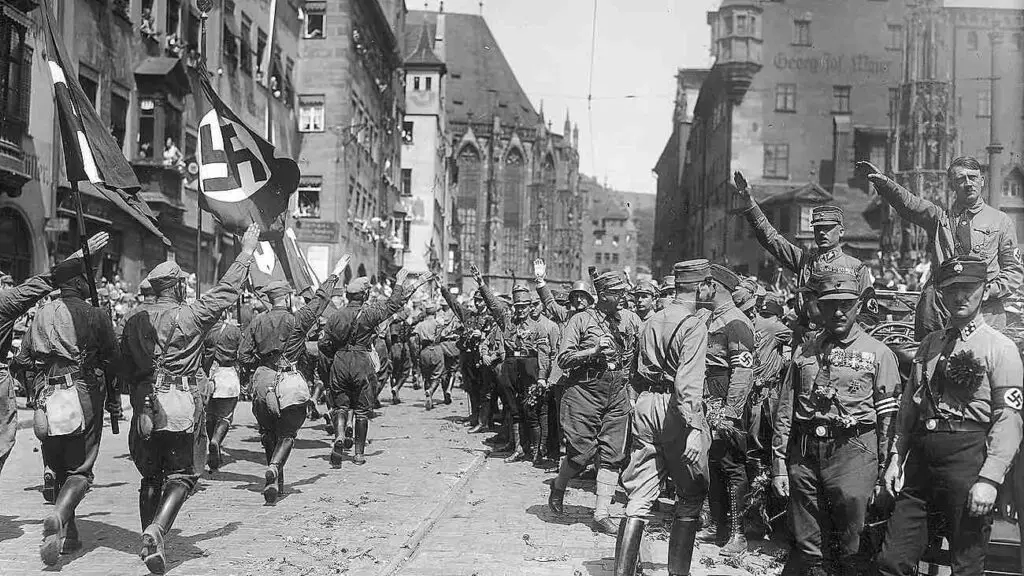
Initially, these camps were primarily used to segregate political adversaries and common criminals and to exploit their physical abilities. However, as events unfolded and with the declaration of an all-out war against the Jews, an ever-growing number of non-Aryan individuals were dispatched to these detention centers.
The Infamous Nuremberg Laws
The full-blown assault against Jews kicked off with the unveiling of the so-called „Nuremberg Laws”.
I think it’s worth saying that this document was all about „preserving the blood and honor of the German nation”, and it tackled citizenship matters too.
Ratified by the Reichstag on September 15, 1935, this legislation stripped all Jewish individuals of their German citizenship. And there it was, the green light for a large-scale assault on the Jewish community. This sparked a tremendous wave of deportations, imprisonments, property seizures, and the obliteration of Jewish assets. Hitler’s plans were becoming increasingly radical.
You would have noticed how he became bolder with his extreme racist remarks in public. Hitler declared an absolute crackdown on the Jewish people, whom the Nazis considered the lowest rung on the social ladder and marked for extermination.
The proliferation of concentration camps resulted in worsening living conditions within these institutions. In the 1930s, even the most notorious camps in the Reich were established, such as Oranienburg, Sachsenhausen, Buchenwald, Mauthausen, and Ravensbrück, where mostly women were imprisoned.
The Nazi System’s Evolution
The evolution of the Nazi system, along with subsequent diplomatic and military offenses, fired up the Germans. Now, they waged an ideological war against the entire non-Aryan world. If you didn’t display the typical Aryan-German characteristics, you were stigmatized.
Soon, the repressive tactics utilized within the Reich would be introduced onto Polish soil. The advent of World War II and the lost September campaign presaged incredibly dark times for the Republic of Poland.
The Nazi Party’s ideology, the NSDAP, was always tinged with a sinister hint of racism and nationalism from the very beginning. The German people eagerly latched onto Adolf Hitler and his accomplices’ slogans, the other masterminds of National Socialsm.
Among the NSDAP’s professed slogans was one justifying the possibility of conducting an aggressive policy on European lands. As such, Poland, the eastern neighbor of the Third Reich, had to be on guard, for Hitler’s ideas primarily targeted Polish territories and even further east.
Initiation of Mass Arrests and Deportations
The Poles didn’t square off with the Germans in open warfare, which culminated in the rapid defeat of the Polish Army. As Nazi officials took control of the neighboring lands, they started to execute a plan for the mass destruction of the population in the occupied regions.
Appointed Governor General, Hans Frank quickly delineated what the German policy for the conquered Polish lands would look like:
Generally, we’ll have to anticipate growing resistance from intellectuals, the Church, and former officers. […] The slightest attempt by the Poles to take any action will result in a monstrous destructive expedition against them.
I wouldn’t shy away from the most brutal terror and its aftermath.
His words foretold of the harsh measures that the Germans subsequently enacted. The crackdown on Polish intellectuals, representing the nation’s vital forces, was the priority. This led to a series of terrorist operations. Some of those detained by the occupier were later dispatched to German camps.
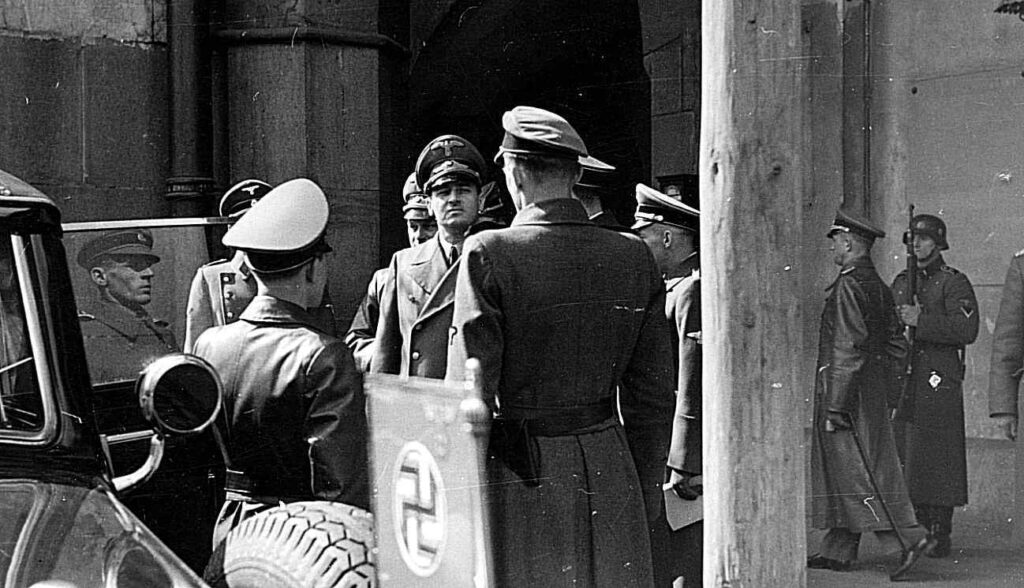
Remember, the Soviet Union also adopted a similar approach, committing atrocities against the Polish nation, primarily targeting the intellectuals. The Germans were carrying out a plan conceived by Hitler, who was scouting for living space in the east.
The local populations were marked for extermination. Poles, as per the initial plans, were earmarked to labor for the German nation. The exploitation of Polish labor was to be followed by the final stage – the physical annihilation of the inhabitants of the occupied territory.
Settlement by Germans and Church Persecution
I can tell you that the next part of the scheme involved settling these lands with German colonists. From the get-go of the occupation, deportation and colonization measures were enforced.
Not even the Catholic Church was spared from persecution. Many priests were dispatched to German camps, with the majority of Church workers ending up in Gross-Rosen. Then there were the Jews, who held a significant place in the German plans. We already know how this community was specifically targeted by the Nazi system.
It wasn’t any different in Poland, where Jews immediately faced repression. The forms of repression and extermination of Jews weren’t random acts, but rather calculated, spread-out actions that were meticulously crafted by the Nazis. In the field of social psychology, we often discuss the impact of situational factors that lead to dehumanization.
German torturers were handed the green light from the top, often being commanded to kill or torture populations that the Nazi ideology didn’t accept. However, you can’t excuse the German people by claiming they were blinded or had their aggression-checking brakes disabled.
Nazi Crimes and Polish Resistance
Despite everything, some folks today try to find aspects that soften the severity of the Nazi crimes. But let’s be real here. Nothing explains genocide, persecution, and other acts of aggression.
Apart from psychological arguments, we need to circle back to occupied Poland. German anti-Semitism didn’t garner a larger group of supporters in Poland. Despite propaganda claiming that Poles also took part in the Holocaust process (and thus the planned, mass extermination of the Jewish people), I am convinced that the Polish nation didn’t back Nazi measures.
Even if anti-Semitism was observed in Polish circles, it never reached the scale of the German variant. A significant portion of those awarded the Righteous Among the Nations Medal by the Yad Vashem Institute are Poles.
This probably definitively debunks the myth that Poles were actually involved in Nazi crimes. Also, let’s not forget that these crimes impacted the Polish people too, who weren’t initially targeted for such brutal extermination as the Jewish people.
Life Under Occupation and The Ghettos
Right after the occupation commenced, the Germans started executing their criminal plan. With regard to Jews, stringent restrictions were imposed almost instantly during the September campaign.

Jewish individuals were progressively stripped of property, rights, and public privileges (evident, for example, in the prohibition of using public transport).
Jews were basically pushed to the fringes of society, deprived of the basic rights that other citizens had. Finally, the occupier started the process of constructing ghettos – separate areas cut off from other city parts – where the Jewish population was confined.
The Unyielding Ghetto Walls
In October 1941, a decree went live that fully excluded Jews from society, prohibiting them from leaving the ghettos. If you think about it, the punishment for stepping outside these zones was death.
The same fate could befall Poles who tried to assist the oppressed. Our countrymen, undeterred, attempted to do what they deemed right and fair. Countless of these nameless heroees were executed by the Germans for their noble deeds.
Now, I know it’s important to remember that not every Pole was a hero, and not every German was a war criminal. It’s just not right to generalize the events of the Second World War and pin them on entire nations.
German Camps and Their Divisions
Let’s discuss the division into concentration camps (primarily Konzentrationslager and Arbeitslager – forced labor) and death or extermination camps, a terminology that’s been widely accepted in history.
Now, this division is somewhat loose and only broadly describes these places of isolation. Zygmunt Zonik, in Anus Belli, emphasizes that a site is often considered a concentration camp if SS men were involved in it.
But I think it is worth saying that this statement is a bit tricky and stirs up controversy. You see, a place guarded by SS officers wasn’t always a concentration camp, and a concentration camp didn’t always have a crew solely made up of SS men.
Zonik also brings up the issue of naming camp branches, often distinguished as Aussenkommando, sub-camps, or simply branches. The distinction between these individual terms is pretty arbitrary, but following Zonik, we’ll use a hierarchy in which branches were the largest organizational subunits of the camp, slightly smaller were sub-camps, and then finally, commandants’ lodges.
These were often groups of a dozen to several dozen prisoners, typically only for the duration of work leaving the main camp.
Reinhard Heydrich’s Classification of Prisons
It’s estimated that around 21,400 people were in German camps when World War II broke out. During the operation of these facilities, nearly 170000 prisoners passed through them. Now, these weren’t initially designed for mass extermination, but as time passed, the Nazis repurposed them for this grim use.
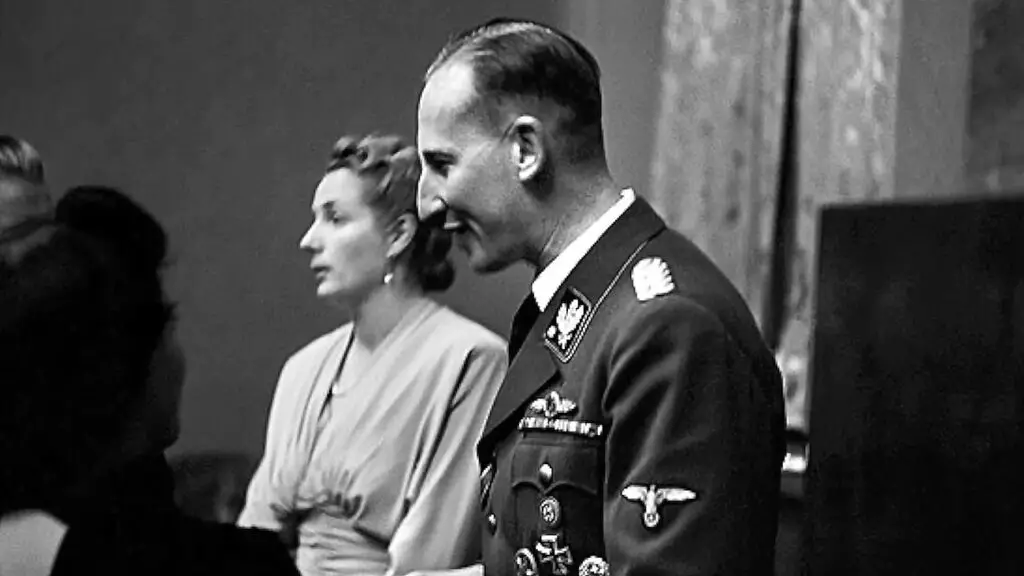
In January 1942, a regulation by Reinhard Heydrich came into effect. This introduced a division of camps into three categories based on the types of prisoners held there. The division was purely theoretical and never really applied, but here’s how it went:
- the first group was camps with prisoner suitable for improvement
- the second group had „heavily burdened” prisoners
- and the third group housed „antisocial prisoners”
During the same month, Nazi officials convened at the Wannsee Conference where the Final Solution of the Jewish Question was decided, codenamed „Endlösung” in German.
This plan essentially entailed the mass extermination of concentration camp prisoners, which wasn’t confined to the Jewish population but was extended to other nations deemed inferior to the German race.
The strategy of liquidating prisoners after extracting their maximum utility continued till the war’s end. The process of wiping out camps and covering their tracks also bore the signs of mass genocide.
Camp Authority and Conditions
According to book „Nazi camps on Polish lands 1939-1945” (Collective work), the camp hierarchy was managed by the Reich Main Security Office (RSHA). Within the camps, the highest authority was the First Department of the commandant’s office, led by the Commandant and the commandant’s adjutant handling day-to-day affairs.

There were several other departments, each with their specific responsibilities, from investigating camp crimes and postal censorship to managing prisoners’ property and conducting pseudo-medical tests.
Prisoners sent to concentration camps usually lived in wooden barracks. The living conditions were horrendous – filth, cold, and insufficient food were a constant affront to human dignity. Starvation was the root of many evils, further hiking up the already high mortality rate among prisoners.
Punishments for minor offenses, which could easily lead to death due to exhaustion and debilitation, were commonplace. The primary task of prisoners was to carry out the work assigned by the camp crew, often exceeding their physical capabilities. It’s believed that food rations were four times lower than what a healthy individual should receive.
Types of Camps and Their Functions
It’s worth to know about the different kinds of camps that existed during a dark period in history. I’ll categorize them for you, so you’ll easily understand the distinctions:
Extermination Camps

These were places like Auschwitz-Birkenau, Treblinka, and Sobibór designated for planned murder. If you want to know about the victims, they included millions of Jews and hundreds of thousands of Sinti and Roma. The culprits came from the SS and SD, but state groups like the Reich Railway and companies like Topf & Söhne, which built the ovens, were involved too.
Concentration Camps
These were places of isolation, exploitation, and humiliation. The big ones were inside the Reich, like Dachau, Sachsenhausen, Buchenwald, and Ravensbrück. Here, prisoners were people like political opponents, homosexuals, Jews, and others, marked with colored triangles. The SS was in charge, and less than 10% of the 700,000 prisoners were German. Big companies had factories here too.
Branches of Concentration Camps
From 1943, over a thousand branches and labor commandos were set up for forced labor. These included working groups for various tasks and even ones on underground construction sites with companies like Siemens, Daimler, and BMW. Most prisoners stayed in these branches, and main camps dealt with management and other functions.
Educational Labor Camps
Allow me to explain about educational labor camps. These were like short-stay concentration camps, mostly for disciplining foreign labourers who were avoiding work. Local Gestapo posts managed these, and there were about 200 of them.
Ghettos
Ghettos, like in Terezin, Łódź, Warsaw, Kraków were places of isolation and exploitation. Here, around four million Jews were isolated and exploited. The army and police, and even private companies, managed these areas.
POW Camps (For Catpives)
The POW camps held prisoners of war and were run by the Wehrmacht. There were different types, such as oflags and stalags, and more than three million Soviet POWs were left to starve, with nearly two million made to work.
Camps for Forced Laborers
I can tell that the largest number of camps were for forced laborers. In 1944, there were about 5.7 million forced laborers from 20 European countries in the German Reich. Among them, there were people from the Soviet Union, Poles, women, teenagers, and even children.
If you need to understand the extent of it, throughout the Reich, there were over 30,000 of these camps. These were in various locations like barracks, restaurant halls, and factory halls.
These camps were part of a vast and terrifying system. Each category of camp served specific functions, playing a role in a web of exploitation, suffering, and death.
- Now please head to another part of this article: Nazi Concentration Camps in Poland
References:
- https://truthaboutcamps.eu/th/misja/15470,Misja-strony.html
- https://pl.wikipedia.org/wiki/Obozy_niemieckie_(1933%E2%80%931945)
- https://www.zwangsarbeit-archiv.de/pl/zwangsarbeit/erfahrungen/lager/index.html

